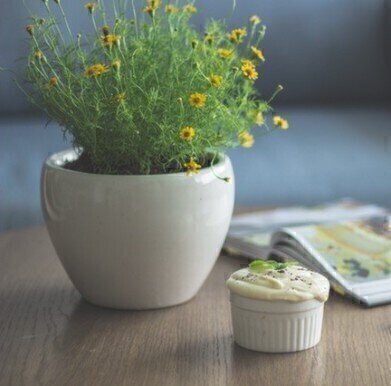GC-MS
Which Houseplants Are Number One for Cleaning Air?
Sep 08 2016
As well as brightening up the place, houseplants can actually clean the air in your home by soaking up harmful chemicals from the air. But some plants do it better than others. So how can we measure their ability and find out the number one plant for your home? Chromatography could have the answer…
Air pollution
While most people consider air pollution a threat outdoors, the air in your home can be equally as hazardous, if not worse — especially if you have a garage attached to your house. A build-up of potentially harmful pollutants can cause serious issues for people. Formaldehyde, toluene and benzene are among the problem pollutants found in the air in your home — but other compounds, such as those coming from the outdoors, can also cause problems in your home.
Every year, around 3.8 million people die younger than they should due to effects caused by household air pollution. Stroke, heart disease and lung cancer are among the list of diseases it’s linked to. Not all cases are so severe. Some concentrations of pollutants can simple cause people to develop fatigue, headaches, dizziness, nausea and some allergies. Even these problems can seriously impact your life though, so it’s important to consider the solutions.
Planting the benefits
NASA’s Bill Wolverton has been a key figure in this field. His research into the use of plants to purify air in space-environments has opened up a potential solution to help keep our homes clean and fresh. More recently, Vadoud Niri, Assistant Professor at the State University of New York, has tested five houseplants for their efficiency in removing eight chemicals from the air.
They first had to sample the volatile compounds in the air using a combination of micro-extraction and gas chromatography-mass spectrometry (GM-MS). The micro-extraction technique samples compounds from the air. GM-MS is then used to identify and quantify these compounds. Of course what this allows are more accurate measurements of the plants’ effect on the pollution in the air.
Niri’s results demonstrated that different plant species have different ways of absorbing and breaking down compounds. Dracaena is most effective for removing acetone, while the jade plant or money tree removed toluene most efficiently. It means a variety of plants is the best solution for tackling a versatile set of pollutants, though the bromeliad was found to be most versatile plant. There were also two compounds — dichloromethane and trichloromethane — that the plants struggled to deal with.
Plant chromatography
Chromatography is a highly useful method not only for examining the air that plants absorb, but for examining plant life itself. Synthetic cannabinoids — used to create illegal and highly abused drugs — require high sensitivity, specificity and accurate qualitative analysis for screening. Supercritical fluid chromatography (SFC) offers a solution, which is explored in this article, ‘Simple Method Development for the Separation of Chiral Synthetic Cannabinoids using Ultra High Performance Supercritical Fluid Chromatography’.
So keep talking to the plants — you’re helping us all live longer.
Digital Edition
Chromatography Today - Buyers' Guide 2022
October 2023
In This Edition Modern & Practical Applications - Accelerating ADC Development with Mass Spectrometry - Implementing High-Resolution Ion Mobility into Peptide Mapping Workflows Chromatogr...
View all digital editions
Events
ACS National Meeting - Fall 2024
Aug 18 2024 Denver, CO, USA
Sep 04 2024 Chiba, Tokyo, Japan
Sep 04 2024 University of Warwick, Coventry, UK
Sep 10 2024 Rockville, MD, USA
Plastics Recycling World Expo Europe
Sep 11 2024 Brussels, Belgium














